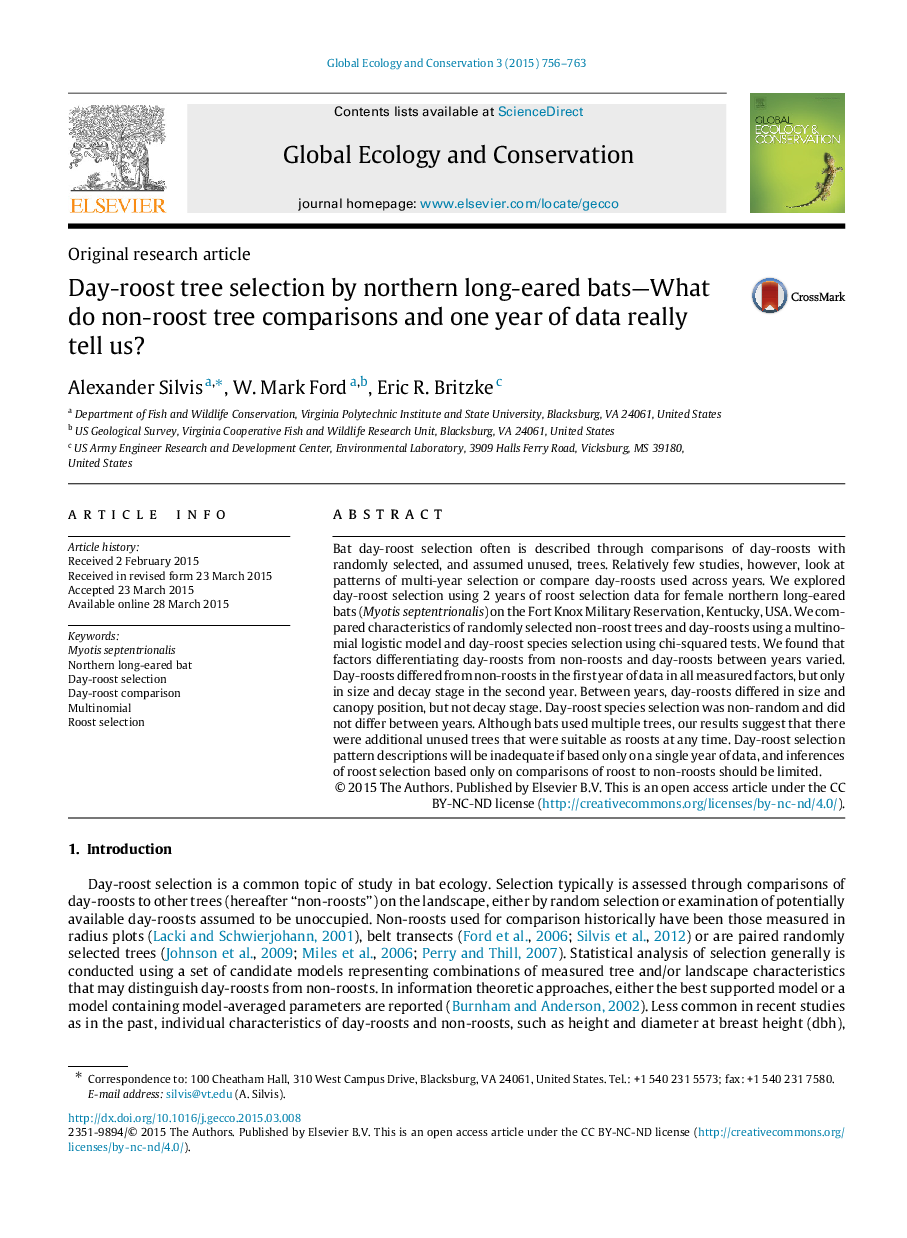| Article ID | Journal | Published Year | Pages | File Type |
|---|---|---|---|---|
| 4379602 | Global Ecology and Conservation | 2015 | 8 Pages |
Bat day-roost selection often is described through comparisons of day-roosts with randomly selected, and assumed unused, trees. Relatively few studies, however, look at patterns of multi-year selection or compare day-roosts used across years. We explored day-roost selection using 2 years of roost selection data for female northern long-eared bats (Myotis septentrionalis) on the Fort Knox Military Reservation, Kentucky, USA. We compared characteristics of randomly selected non-roost trees and day-roosts using a multinomial logistic model and day-roost species selection using chi-squared tests. We found that factors differentiating day-roosts from non-roosts and day-roosts between years varied. Day-roosts differed from non-roosts in the first year of data in all measured factors, but only in size and decay stage in the second year. Between years, day-roosts differed in size and canopy position, but not decay stage. Day-roost species selection was non-random and did not differ between years. Although bats used multiple trees, our results suggest that there were additional unused trees that were suitable as roosts at any time. Day-roost selection pattern descriptions will be inadequate if based only on a single year of data, and inferences of roost selection based only on comparisons of roost to non-roosts should be limited.
